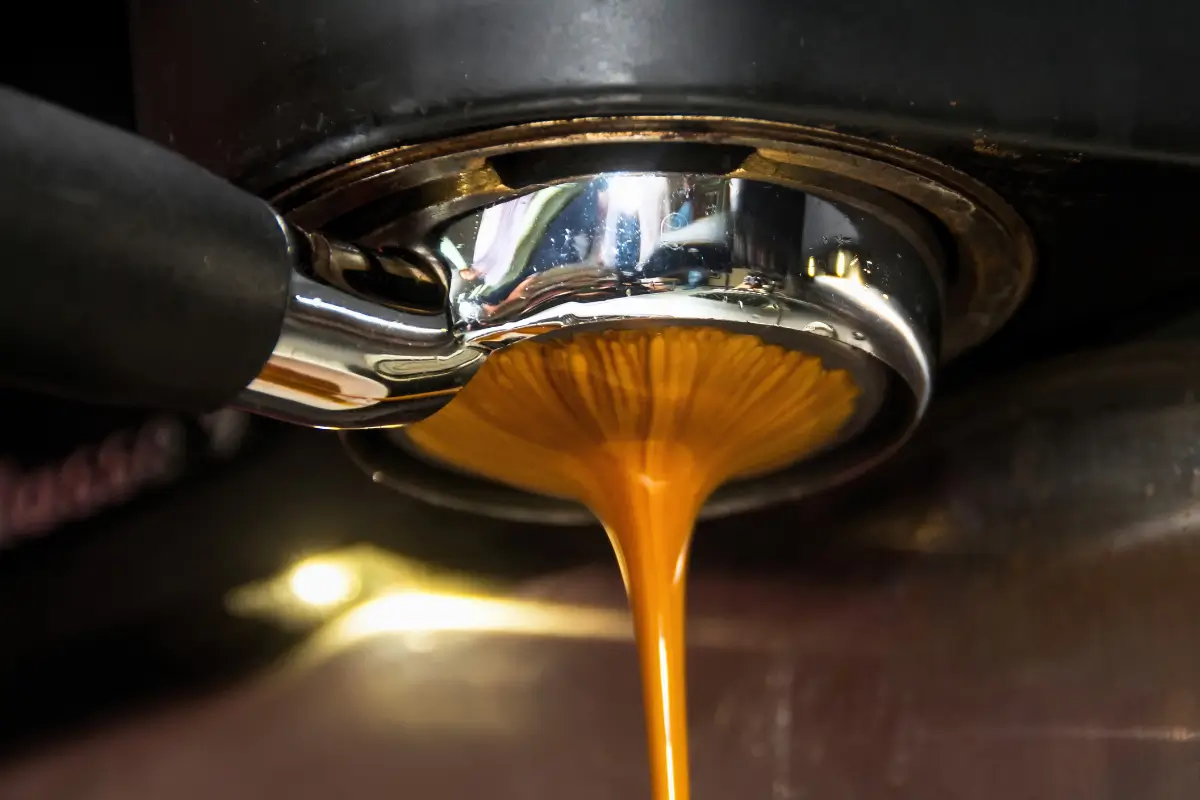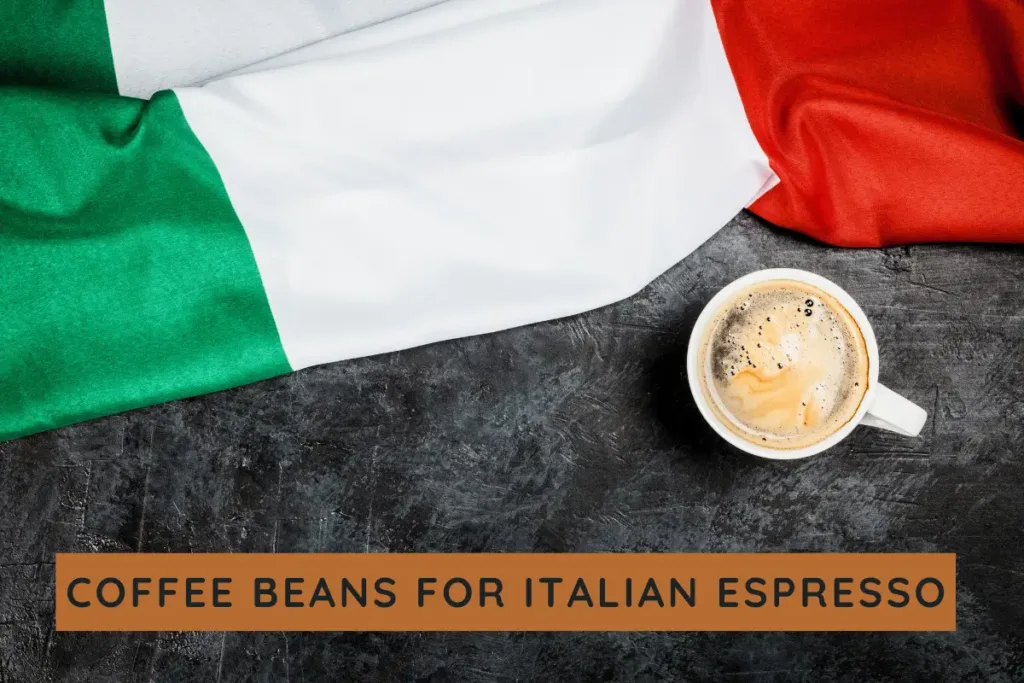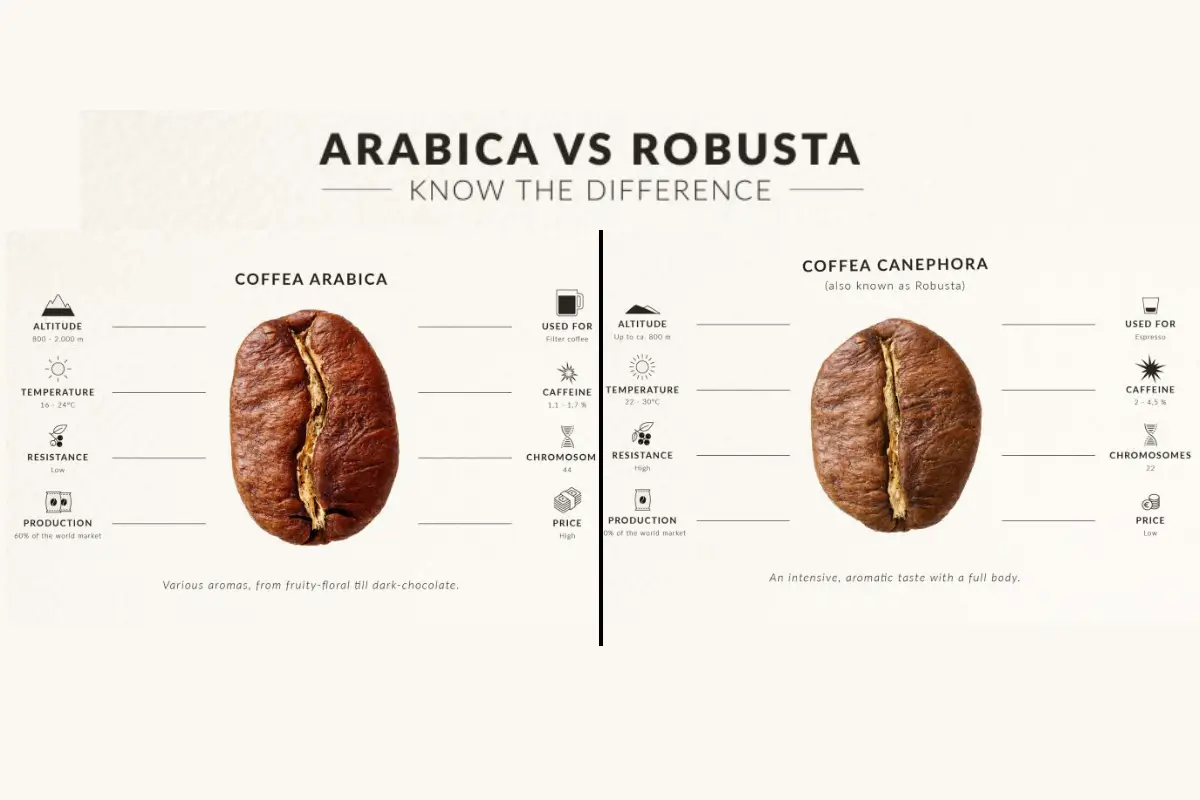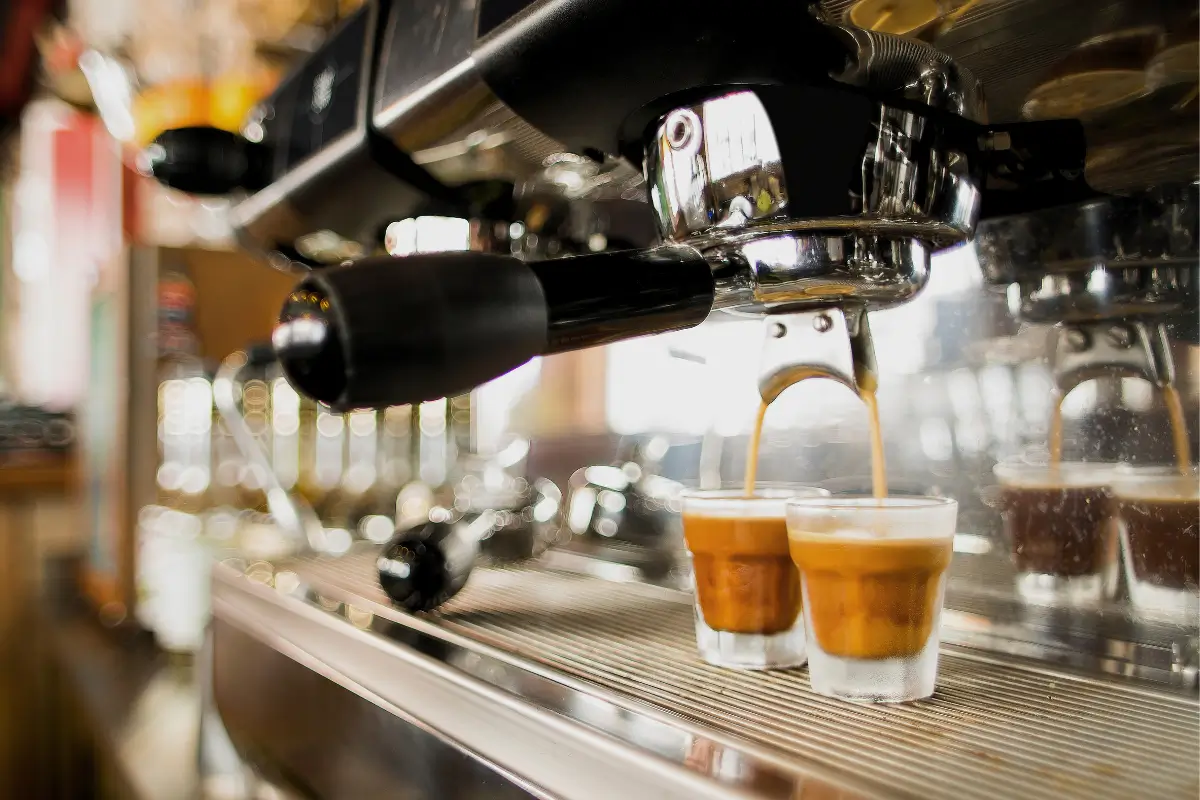The best coffee beans for Italian espresso are Arabica and Robusta blends. These beans provide rich flavor and crema.
Italian espresso is renowned for its strong, rich, and velvety taste. Choosing the right beans is crucial for achieving this signature flavor. Arabica beans offer a smooth, nuanced taste with a hint of sweetness, while Robusta beans add a bold, intense flavor and a thicker crema.
A blend of these two types creates a balanced, robust espresso that is both aromatic and flavorful. For the best results, select freshly roasted beans and grind them just before brewing. This ensures maximum freshness and a superior espresso experience. Quality beans are the foundation of an exceptional Italian espresso.

The Quest For The Perfect Italian Espresso
Finding the best coffee beans for Italian espresso is an art. Coffee lovers chase the perfect blend of flavor, aroma, and crema. Each cup tells a story of the bean’s journey. This journey includes the soil, climate, and care given by farmers. Let’s dive into what makes an ideal Italian espresso.
The Essence Of Italian Espresso
Italian espresso is rich, bold, and full-bodied. It has a deep flavor that lingers on the palate. The crema on top is golden and velvety. This tiny layer holds the key to great espresso. It locks in the aroma and flavor.
Brewing a perfect shot is an art form. The process requires precision and skill. The beans must be fresh and ground to the right size. The water should be at the right temperature. When done right, the result is a small cup of liquid gold.
Characteristics Of The Ideal Bean
The best beans for Italian espresso have unique traits. These traits make them stand out in the cup. Here is a list of key characteristics:
- Origin: Beans from Brazil, Colombia, and Ethiopia are popular.
- Roast Level: Medium to dark roast brings out deep flavors.
- Flavor Profile: Notes of chocolate, nuts, and caramel are common.
- Acidity: Low acidity ensures a smooth and balanced taste.
- Body: Full-bodied beans create a rich and satisfying espresso.
Here is a table to summarize these characteristics:
| Characteristic | Description |
|---|---|
| Origin | Brazil, Colombia, Ethiopia |
| Roast Level | Medium to Dark |
| Flavor Profile | Chocolate, Nuts, Caramel |
| Acidity | Low |
| Body | Full-bodied |
Choosing the right beans makes all the difference. The perfect bean turns a good espresso into a great one.
History Of Espresso In Italy
Espresso is a beloved drink in Italy. Its history is rich and fascinating. Let’s dive into the origins and evolution of espresso in Italy, and understand its cultural significance.
Origins And Evolution
The story of espresso begins in the early 20th century. In 1901, Luigi Bezzera invented the first espresso machine. He wanted to make coffee quickly and efficiently. The machine used steam pressure to brew coffee faster.
In 1905, Desiderio Pavoni bought Bezzera’s patent. He improved the machine and began mass production. This innovation spread across Italy. By the 1940s, espresso had become a staple in Italian cafes.
After World War II, Achille Gaggia introduced a new espresso machine. It used a lever to create higher pressure. This produced a thicker crema, enhancing the flavor. Espresso quickly gained popularity worldwide.
Cultural Significance
In Italy, espresso is more than a drink. It is a social ritual. Italians often enjoy it standing at the bar. They chat with friends or the barista. This tradition fosters community and connection.
Espresso is also a symbol of Italian craftsmanship. The art of making espresso involves skill and precision. Each shot is a testament to the barista’s expertise. Italians take pride in their coffee culture.
Furthermore, espresso reflects Italy’s dedication to quality. From the beans to the brewing process, every detail matters. This commitment to excellence has made Italian espresso famous worldwide.
| Year | Event |
|---|---|
| 1901 | Luigi Bezzera invents the first espresso machine |
| 1905 | Desiderio Pavoni buys Bezzera’s patent and improves the machine |
| 1940s | Espresso has become a staple in Italian cafes |
| 1947 | Achille Gaggia introduces a lever-operated machine |
Types Of Coffee Beans
Choosing the best coffee beans for Italian espresso can be a delightful journey. Different types of beans bring unique flavors and aromas to your cup. Understanding the types of coffee beans can help you make an informed choice.
Arabica Vs. Robusta
Two primary types of coffee beans dominate the market: Arabica and Robusta. Each type has unique characteristics that affect the espresso’s taste and quality.
- Smoother, sweeter taste
- Higher acidity
- Grown at higher altitudes
- More expensive
Robusta Beans:
- Stronger, harsher flavor
- Lower acidity
- Grown at lower altitudes
- Less expensive
Regional Bean Varieties
The origin of the coffee beans plays a significant role in their flavor profile. Here are some popular regional varieties that are ideal for Italian espresso:
| Region | Characteristics |
|---|---|
| Latin America | Bright, fruity, and balanced |
| Africa | Floral, wine-like, and complex |
| Asia | Earthy, spicy, and bold |
Blending beans from these regions can create a balanced and flavorful espresso. Each region offers a unique taste experience.
Roasting For Espresso
Roasting plays a crucial role in crafting the perfect Italian espresso. The way coffee beans are roasted can significantly impact their flavor, aroma, and overall character. Understanding the nuances of roast profiles helps in choosing the best beans for a rich, aromatic espresso experience.
Roast Profiles For Espresso
Espresso beans are typically roasted to a medium or dark profile. This brings out a full-bodied flavor. A medium roast highlights the natural flavors of the coffee. It provides a balance of acidity and body. Dark roasts, on the other hand, have a bolder, more intense flavor. They tend to mask the bean’s origin characteristics.
| Roast Level | Characteristics |
|---|---|
| Light Roast | High acidity, bright flavor, lighter body |
| Medium Roast | Balanced acidity and body, nuanced flavors |
| Dark Roast | Low acidity, rich and bold flavor, heavier body |
Impact On Flavor And Aroma
Roast level directly affects the flavor and aroma of the espresso. Light roasts offer fruity and floral notes. Medium roasts bring out a mix of sweetness and slight bitterness. Dark roasts provide deep, caramelized flavors.
The aroma also changes with the roast level. Light roasts have a fragrant and complex aroma. Medium roasts offer a balanced scent. Dark roasts emit a strong, smoky aroma. These differences help in creating a unique espresso experience.
- Light Roast: Fruity, floral, complex aroma
- Medium Roast: Balanced, sweet, slight bitterness
- Dark Roast: Bold, caramelized, smoky
Choosing the right roast level is essential. It helps in tailoring the espresso to your taste preferences. Experimenting with different roast profiles can lead to discovering your perfect cup.
Grinding For Perfection
Grinding coffee beans is crucial for making the best Italian espresso. The right grind size and a good grinder ensure a perfect cup every time.
The Importance Of Grind Size
The grind size affects the flavor and strength of your espresso. Fine grinds let water extract flavors quickly. Coarse grinds make the process slower and uneven.
For Italian espresso, a fine grind is essential. It ensures optimal extraction and rich flavor. Always use a consistent grind size for the best results.
Finding The Right Grinder
Choosing the right grinder is as important as the grind size. A quality grinder ensures uniform particles. This consistency results in better extraction.
There are two main types of grinders: blade and burr. Blade grinders are cheaper but less consistent. Burr grinders provide uniform particles and better control.
Consider investing in a burr grinder for the best Italian espresso. It may cost more, but the quality of your espresso will improve significantly.
| Grinder Type | Advantages | Disadvantages |
|---|---|---|
| Blade Grinder | Inexpensive, simple to use | Inconsistent grind, less control |
| Burr Grinder | Consistent grind, better control | More expensive, larger |
For the best results, grind your coffee just before brewing. This retains the beans’ freshness and aroma. Remember, the right grind size and grinder make all the difference in your Italian espresso.

Credit: amazon.com
Brewing Techniques
Brewing the perfect Italian espresso involves using the right techniques. These methods ensure a rich, flavorful cup every time. Let’s explore the traditional and modern approaches to making Italian espresso.
Traditional Italian Methods
Traditional Italian methods rely on simple tools and practices. These techniques have been perfected over generations.
- Moka Pot: A classic stovetop brewer. It uses steam pressure to push water through coffee grounds.
- Neapolitan Flip Coffee Pot: Also known as the Napoletana. This pot brews by flipping over once the water boils.
- Manual Lever Machines: These machines require manual pressure. They give baristas full control over the brewing process.
These methods emphasize the importance of freshly ground coffee and consistent pressure. They are the heart of traditional Italian espresso brewing.
Modern Espresso Machines
Modern espresso machines bring convenience and precision to coffee brewing. They feature advanced technology to ensure consistency.
| Machine Type | Features |
|---|---|
| Super-Automatic | Grinds tamps and brews coffee at the touch of a button. |
| Semi-Automatic | Allows control over the tamping and brewing process. Requires some barista skills. |
| Capsule Machines | Uses pre-packaged coffee capsules. Offers consistency and ease of use. |
Modern machines often come with customizable settings. This allows users to tailor their espresso to their taste preferences. Features like temperature control and adjustable pressure enhance the brewing experience.
Both traditional and modern methods have their unique benefits. Choosing the right one depends on your preference and expertise.
Tasting Notes
Selecting the best coffee beans for Italian espresso involves understanding their tasting notes. These notes reveal the flavors and aromas in your cup. This section explores how to identify flavor profiles and the role of crema in espresso.
Identifying Flavor Profiles
Identifying flavor profiles is crucial for coffee enthusiasts. The tasting notes of coffee beans include various flavors. Here are some common flavor profiles:
- Fruity: Hints of berries, citrus, or tropical fruits.
- Nutty: Notes of almonds, hazelnuts, or peanuts.
- Spicy: Flavors like cinnamon, nutmeg, or black pepper.
- Chocolatey: Tastes like dark chocolate or cocoa.
- Floral: Delicate hints of flowers like jasmine or rose.
These flavor profiles are often influenced by the coffee bean’s origin. For instance, beans from Ethiopia may have fruity notes. Brazilian beans might offer nutty or chocolatey flavors.
The Role Of Crema In Espresso
Crema is the golden layer on top of an espresso shot. It plays a vital role in the overall tasting experience.
Crema enhances the espresso’s flavor and aroma. It adds a rich texture and a slightly bitter taste. This balance is essential for a perfect Italian espresso.
Here are the key factors influencing crema:
- Freshness: Freshly roasted beans produce better crema.
- Grind size: A fine grind helps create a thick crema.
- Pressure: Proper pressure during extraction is critical.
A well-crafted crema indicates high-quality beans and proper brewing techniques. It is the hallmark of an authentic Italian espresso.
Pairing With Italian Delicacies
Italian espresso is a rich and intense coffee. It pairs beautifully with various Italian delicacies. These pairings enhance the flavors, creating a delightful experience. Let’s explore the best combinations.
Complementary Flavors
Some flavors complement the boldness of Italian espresso. The most popular options include:
- Tiramisu: This creamy dessert balances the bitterness of espresso.
- Cannoli: The sweetness of the ricotta filling pairs well.
- Amaretti Cookies: Their almond flavor enhances the coffee’s nutty notes.
Espresso-based Drinks
Espresso is the base for many delicious drinks. Here are some popular choices:
- Cappuccino: A mix of espresso, steamed milk, and foam.
- Macchiato: Espresso with a dash of foamed milk.
- Affogato: Espresso poured over vanilla gelato.
Pair these drinks with Italian pastries for a perfect match.
Sourcing The Best Beans
Finding the perfect coffee beans for Italian espresso is an art. The quality of your espresso greatly depends on the beans you choose. This section will guide you through the process of sourcing the best beans.
Selecting A Supplier
Choosing the right supplier is crucial for quality beans. Look for suppliers with a good reputation. Check reviews and ratings from other customers. This ensures you get high-quality beans consistently.
Consider these factors when selecting a supplier:
- Reputation: Trusted suppliers often have positive feedback.
- Experience: Suppliers with years in business usually offer better beans.
- Variety: A wide range of beans provides more options for your espresso.
Sustainability And Ethical Considerations
Sustainability and ethics are important in coffee production. Look for suppliers who support fair trade practices. This ensures that farmers are paid fairly. Ethical sourcing also means using environmentally friendly farming methods.
Here are some certifications to look for:
| Certification | Meaning |
|---|---|
| Fair Trade | Farmers receive fair payment for their beans. |
| Organic | Beans are grown without harmful chemicals. |
| Rainforest Alliance | Farming methods protect the environment. |
Choosing sustainable beans helps protect our planet. It also supports coffee-growing communities.
Home Espresso Vs. Café Quality
Many coffee lovers dream of making perfect Italian espresso at home. But can home espresso machines match the quality of café espresso? Let’s explore how to achieve café quality espresso at home.
Achieving Café Standard At Home
Achieving café standard espresso at home requires more than just good coffee beans. You need the right equipment and techniques.
Fresh beans: Use beans roasted within the last two weeks.
Grind size: Grind your beans just before brewing. Aim for a fine, consistent grind.
Water temperature: Keep water between 195°F and 205°F (90°C to 96°C).
Pressure: Brew with 9 bars of pressure.
The Investment In Equipment
Investing in the right equipment is crucial for home espresso enthusiasts. Here are the key items:
- Espresso Machine: A good machine ensures stable pressure and temperature.
- Grinder: A burr grinder provides a consistent grind.
- Scale: Measure coffee and water for accuracy.
- Tamper: A good tamper ensures even extraction.
Here’s a comparison of essential equipment:
| Equipment | Budget Option | Premium Option |
|---|---|---|
| Espresso Machine | $300 – $500 | $1000 – $3000 |
| Grinder | $50 – $200 | $300 – $1000 |
| Scale | $20 – $50 | $100 – $200 |
| Tamper | $10 – $30 | $50 – $100 |
With the right beans and equipment, you can make café-quality espresso at home. Enjoy the rich, bold flavors of Italian espresso without leaving your kitchen.
Frequently Asked Questions
What Beans Do Italians Use For Espresso?
Italians typically use Arabica and Robusta beans for espresso. These blends create a rich, balanced flavor.
What Brand Of Espresso Do Italians Use?
Italians often use brands like Lavazza, Illy, and Kimbo for their espresso. These brands are popular for their rich flavor.
Which Coffee Beans Are Best For Espresso?
Arabica beans are best for espresso due to their smooth, rich flavor. Look for medium or dark roast varieties.
What Kind Of Coffee Beans Do They Use In Italy?
Italians typically use Arabica and Robusta coffee beans. Arabica beans offer a smoother, sweeter flavor. Robusta beans add a stronger, more bitter taste. Both types create the rich, full-bodied espresso Italy is famous for.
Conclusion
Finding the best coffee beans for Italian espresso can elevate your coffee experience. Choose beans that offer rich, bold flavors. Experiment with different roasts to find your perfect match. Freshness is key, so buy in small batches. Enjoy crafting authentic Italian espresso at home with these top-quality beans.



